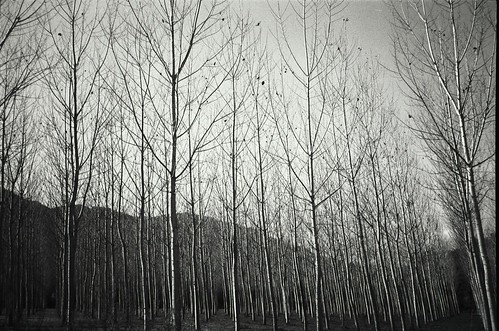Curious about the state of digital SLR cameras today?
This quick review will provide you with the BIG POINTS to keep in mind as you go shopping for a new digital SLR.
MAIN FEATURES
Interchangeable Lenses - you can swap the lens on a digital SLR as much as you like
Optical Viewfinders - what you see through the viewfinder is what you get in the final image
Large Sensors - increased sensor size (vs. compact cameras) allows SLRs to capture high-quality photos in low-light conditions
High Speed - these cameras are FAST, with instant startup times and zero delay between shutter press and image capture
Before I dig into some of these features in more detail, let's review the features that are "missing" from digital SLR cameras, at least when you compare them to their compact cousins.
WHAT'S MISSING
No Movies - digital SLR cameras don't capture movies. They're for still photography ONLY
No LCD Previews - many digital SLRs don't display a preview of the image you're about to take on the LCD (with some notable exceptions)
Not Compact - digital SLRs can't fit into a pocket - even the compact ones are quite large and bulky (the lens can add a lot of size and weight)
EMERGING TRENDS
Now that we've gotten the high level summary out of the way, let's talk more about some of the developing trends in digital SLR camera technology.
I used to recommend caution when buying a 10 megapixel camera, since you only need 10 megapixels if you want to aggressively crop your photos or make gigantic prints. I really can't do that anymore, because the manufacturers are making cameras with anything less obsolete.
While there used to be a hearty crop of 6 megapixel SLRs to choose from (which is PLENTY if you enjoy making 8x10 and 4x6 prints) today there are fewer and fewer and every new camera on the horizon is packed with 10 megapixels.
Another steady trend is the increasing size of the LCD screens, paired with a decrease in the size of the camera body.
While 1.8 inch LCDs used to be standard, the new baseline in LCD size is 2.5 inches. These larger screens help you to review the photo that you just took, and make it easier to change settings on the camera using the menus.
On the flip side, the dimensions of digital SLR cameras continue to decrease. First-generation digital SLRs were huge and heavy, and not the sort of cameras that you wanted to carry on a day hike.
Today, manufactuers are trying to make their SLRs as compact as possible, in order to make them more attractive to consumers who don't want to lug around giant cameras all the time. Pentax started the trend with their small and light line of *ist cameras, and now Canon and Nikon have followed suit (with the Rebel xTi and D40 respectively).
SPECIAL FEATURES
A year ago, digital SLR cameras competed on a variety of standard features: megapixels, camera size, continuous photo speed, LCD size, and the number of different photography modes.
Recently there's been an emergence of three new "extra" features that are included on a limited number of cameras.
Dust Control - dust can get on your camera's sensor when you're chaning a lens, and shows up in every photo you take. Dust control is designed to prevent this.
Image Stabilization - this feature helps you take clear photos in low-light conditions when you can't use a flash
Live View LCD - this shows a preview of the image you're about to take, much like the LCD on every compact digital camera
Olympus pioneered the dust control technology (their name for it is a SuperSonic Wave Filter) and other companies are beginning to adopt it using their own proprietary names.
While image stabilized lenses have been around for years, the addition of image stabilization (IS) to the camera body (which works with ANY lens) is a more recent innovation. The first cameras to use it were the now-obsolete Konica Minolta Maxxum cameras. Konica Minolta sold their operations to Sony, who adopted the IS technology in their Alpha A100 camera.
Now, built-in IS is also included in cameras made by Pentax, Olympus and Samsung.
Live LCD screens are another Olympus innovation, which has not been as readily adopted by other manufacturers. To date, only two other non-Olympus cameras have live view LCDs: the high-end professional Canon 1D Mark III and the fairly expensive Panasonic DMC-L1.
THE PRICES
There was a day when you couldn't get a decent digital SLR camera for anything less than $2,000. I'm happy to say that those days are long gone.
Now many new digital SLR cameras debut with prices under $800, and these prices simply decrease as time goes on (SLR cameras are a lot like cars and computers in that sense).
Let me be clear though: digital SLR cameras are still not competitively priced with many of the compact digital cameras. You cannot find ANY digital SLR camera for less than $400, and the cameras that are less than $600 have limited feature sets.
What's your best bet if you're looking for an inexpensive digital SLR?
Go online and hunt around for models from 2005 and 2006. The manufactuers release several new cameras each year, and while many of the older cameras are still quite capable, you can't find any stores that sell them new.
Many owners of first and second-generation digital SLR cameras are looking to upgrade to the latest and greatest, so you have the opportunity to snatch up their old cameras at bargain-basement prices.








